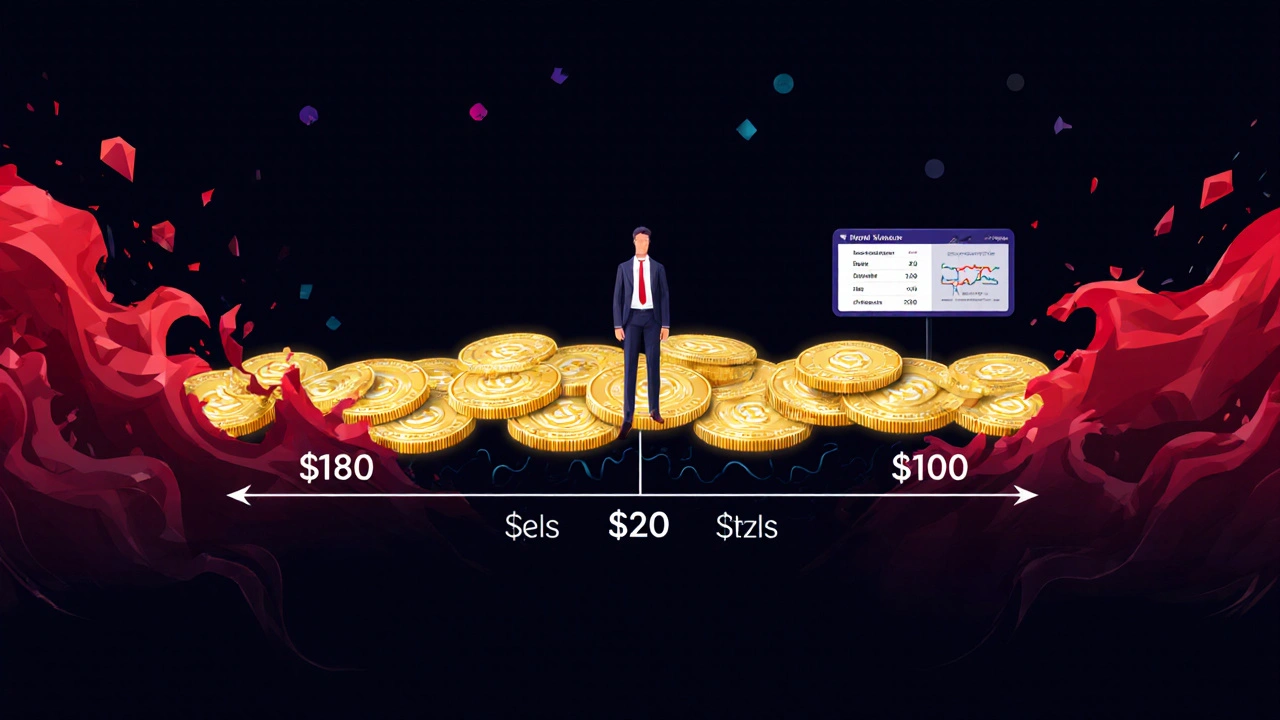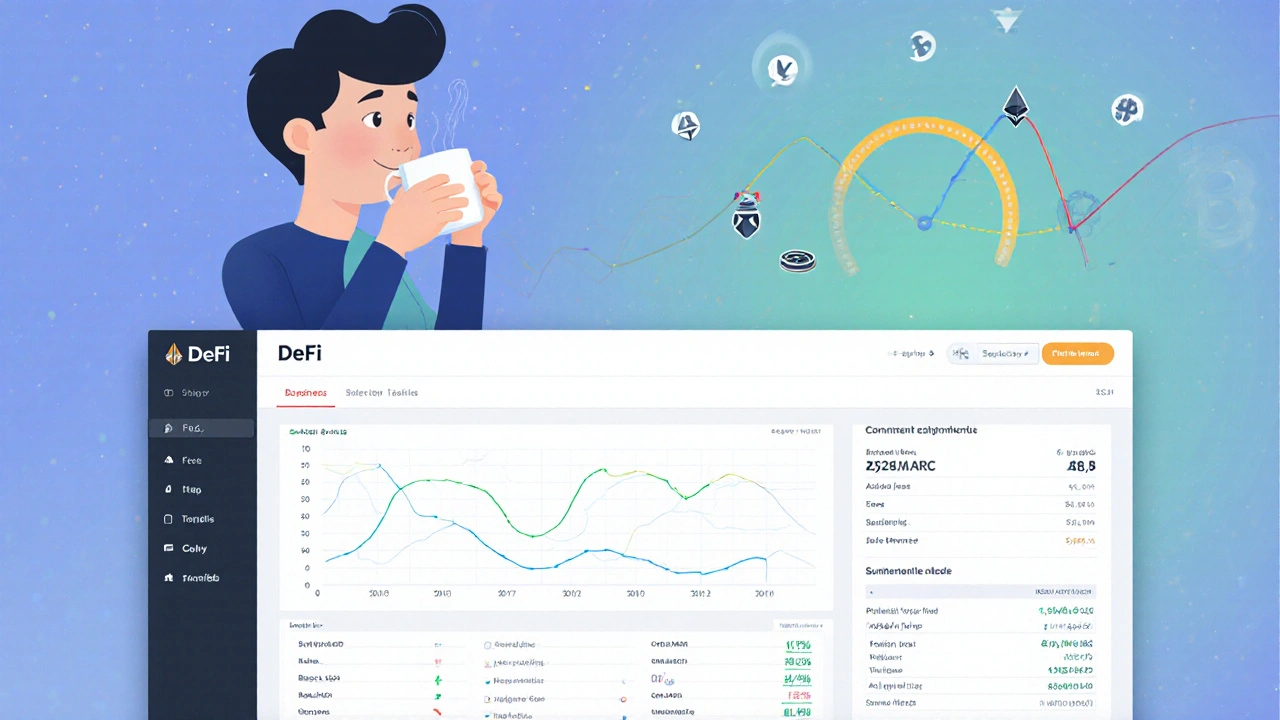When you deposit assets into a DeFi liquidity pool, you’re not just earning fees-you’re taking on a hidden risk called impermanent loss. It’s not a bug. It’s a feature of how automated market makers (AMMs) work. And if you don’t understand it, you could lose money-even when the price of your assets goes up.
What Exactly Is Impermanent Loss?
Impermanent loss happens when the value of your deposited assets in a liquidity pool drops compared to just holding them in your wallet. It’s called "impermanent" because if the prices return to their original ratio, the loss disappears. But if you withdraw while prices are out of sync, it becomes permanent.Here’s how it works: Imagine you put $1,000 worth of ETH and $1,000 worth of DAI into a 50/50 Uniswap V2 pool. ETH is trading at $100, so you deposit 10 ETH and 1,000 DAI. Now, ETH jumps to $200. Arbitrage traders buy cheap ETH from your pool and sell it on other exchanges until the pool’s price matches the market. Your pool now holds about 7.07 ETH and 1,414 DAI. Total value? $2,828. But if you’d just held your 10 ETH and 1,000 DAI, you’d have $3,000. That $172 difference? That’s impermanent loss.
The math behind it is simple: the constant product formula (x * y = k) forces the pool to rebalance automatically. As one asset rises, the pool sells some of it to buy the other. You end up with less of the asset that went up-and more of the one that didn’t. That’s the trade-off for providing liquidity.
Why It’s Not Always a Loss
Many people panic when they hear "loss." But impermanent loss isn’t the whole story. Liquidity providers earn trading fees. In high-volume pools like ETH/USDC or UNI/ETH, those fees often cover-and sometimes exceed-the loss.Uniswap co-founder Hayden Adams says fees typically offset 60-80% of impermanent loss in popular pools. A Reddit user who deposited into a UNI/ETH pool during ETH’s 2x price surge in 2021 lost 14.8% to impermanent loss-but earned $620 in fees, turning a net gain of 3.2%. Another user on USDC/USDT saw a 5.1% loss but gained 8.2% in fees over six months.
The key is net APY: fees minus impermanent loss. If your pool pays 15% APY in fees and you expect a 7% impermanent loss, you’re still ahead. But if fees are 3% and loss is 10%? You’re losing money.
Not All Pools Are Created Equal
Impermanent loss isn’t the same across all liquidity pools. It depends on the assets and the AMM design.- Stablecoin pairs (USDC/USDT, DAI/USDT): These barely move. A 10% price swing in USDC vs USDT? Impermanent loss is under 0.1%. That’s why Curve Finance dominates stablecoin liquidity.
- Highly volatile pairs (SOL/ETH, BTC/ETH): These are dangerous. A 3x price move can mean a 13.4% loss. Many beginners get burned here.
- Uniswap V2 (50/50 pools): The original design. High exposure. A 2x price change = 5.7% loss.
- Uniswap V3 (concentrated liquidity): You choose the price range. If ETH stays between $180-$220 and you lock your liquidity there, your loss during a 2x move drops from 5.7% to 3.2%. But if ETH moves outside your range? You stop earning fees-and you’re fully exposed to loss.
- Balancer (custom ratios like 80/20): You can put 80% in a stablecoin and 20% in ETH. Less exposure to volatility. Loss reduction of 15-25% compared to 50/50 pools.
Delphi Digital found that properly configured V3 positions cut impermanent loss by 30-50% compared to V2. But poorly set ranges? Losses can jump to 8.1%. It’s not passive. You have to manage it.

How to Avoid Getting Hurt
Here’s what experienced liquidity providers do:- Use an impermanent loss calculator. Tools like ilcalculator.com let you plug in asset pairs, price changes, and pool types. It takes 30 seconds. Do it before you deposit.
- Stick to high-correlation assets. Stablecoins, wrapped tokens, or tokens from the same ecosystem (like ETH and stETH) move together. Less divergence = less loss.
- Choose Uniswap V3 over V2. If you’re comfortable managing price ranges, V3 is the smart move. Set ranges tight around current prices. Don’t go too wide.
- Check fee yields. On DeFiLlama, sort pools by 7-day fees. If a pool offers 20% APY in fees and you expect 6% loss? Go for it. If fees are 4% and loss is 12%? Walk away.
- Don’t withdraw during price swings. If ETH spikes and you panic-sell, you lock in the loss. Wait. Let it settle. Or better yet, use automated vaults like Gamma Strategies that adjust your V3 positions for you.
A 2023 survey of 1,245 liquidity providers found that 42.1% named impermanent loss as their top concern. But 53.7% said they’d still provide liquidity if fees beat loss by at least 3%. That’s the sweet spot.
The Big Mistakes Beginners Make
Most losses aren’t from bad luck. They’re from ignorance.- Depositing into volatile pairs without checking the math. 28.4% of beginners do this. ETH/SOL? Bad idea unless you know exactly what you’re doing.
- Withdrawing during a price dip. 37.2% of users who suffered losses did so because they panicked and pulled out. The loss becomes permanent the moment you withdraw.
- Ignoring fees entirely. 62.8% of new LPs assume the price movement is the only factor. They forget: fees are your real profit engine.
One user on Crypto Twitter said: "I never provide liquidity without checking ilcalculator.com first. It saved me from a 19% loss on a LINK/ETH pool last month." That’s the mindset.

What’s Changing in 2025?
The DeFi space is evolving fast. By 2025, 70% of new AMMs will include built-in impermanent loss mitigation, up from just 25% in 2023.- Automated V3 vaults like Gamma Strategies now adjust your price ranges daily. They reduce loss by 42% on average.
- New AMM designs from UC Berkeley and others use adaptive formulas that cut loss by 65-80% while keeping liquidity deep.
- Institutional adoption is rising. Fidelity reports 63% of institutional DeFi users now use concentrated liquidity, not passive pools.
Still, risk remains. Chainalysis found that 38.7% of liquidity providers in volatile pairs lost money in 2022-2023-even after collecting fees. Impermanent loss isn’t going away. But now, you have the tools to beat it.
Final Thought: It’s Not About Avoiding Loss-It’s About Managing It
Impermanent loss isn’t something to fear. It’s something to calculate. You’re not a passive investor anymore. You’re a liquidity manager. Your job isn’t just to deposit and wait. It’s to choose the right pools, set the right ranges, track the fees, and know when to exit.Most people treat DeFi like a slot machine. The smart ones treat it like a business. And in business, you don’t gamble-you measure, adjust, and optimize.
Is impermanent loss real money I lose?
Yes-but only if you withdraw while prices are out of sync. If you hold and prices return to their original ratio, the loss disappears. But if you pull out during a price swing, that loss becomes permanent. It’s not a theoretical number-it’s real capital you’re risking.
Can I avoid impermanent loss entirely?
Not completely, but you can minimize it. Use stablecoin pairs like USDC/USDT, choose Uniswap V3 with tight price ranges, or use automated vaults. Avoid highly volatile pairs unless you’re actively managing your position.
Do I pay taxes on impermanent loss?
Tax rules are unclear. The IRS hasn’t issued specific guidance. Most tax software treats it as an unrealized loss, meaning you can’t deduct it until you sell. But if you withdraw and realize a net gain after fees, you may owe capital gains. Consult a crypto-savvy accountant.
Why do people still provide liquidity if impermanent loss is risky?
Because fees often outweigh the loss. In high-volume pools, you can earn 10-30% APY in fees. Even with a 7% impermanent loss, you’re still ahead. It’s not about avoiding loss-it’s about net returns. Many top yield farmers make more from fees than they lose to price divergence.
Should I use Uniswap V2 or V3 as a beginner?
Start with V3-but only if you use a pre-built range. Don’t guess the price range. Use tools like DeFi Saver or Gamma Strategies that auto-configure optimal ranges for you. V2 is simpler but far less efficient. You’ll earn less in fees and lose more to price changes.
How often should I check my liquidity position?
If you’re using V2 or a stablecoin pool, check once a month. If you’re using V3, check weekly. If prices move outside your range, you’re no longer earning fees. Rebalance or adjust your range. Automated vaults handle this for you-ideal if you don’t have time to monitor daily.


